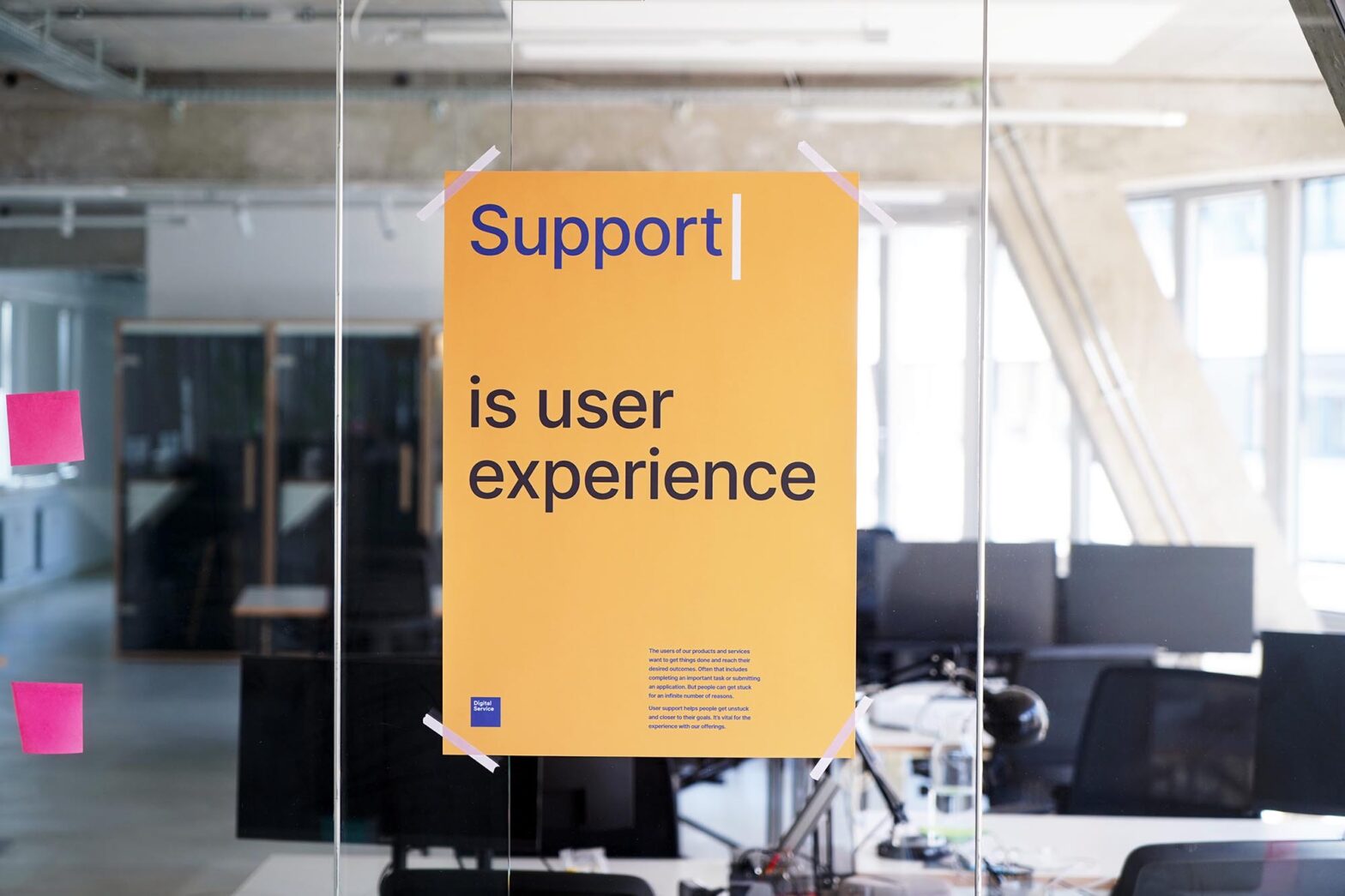Only about 10% of property owners have filed their property tax declarations until now. There are less than 2 months left, with the deadline at the end of October. A last-minute wave of filings appears not unlikely, and with it, my support colleagues will be very busy. So the work they are crucial for adequate service provision.
We discussed the importance of support in our recent user research blog post and how it helps us improve our products and services. Providing quick responses when a user is stuck is an essential part of your user experience. Acknowledging that fact, I made a poster. I couldn’t decide on the colours, so I put up two versions.
Understanding pathways forward
This week, the Cabinet presented and published the Federal government’s digital strategy for the coming 3 years. It comes with its own website, explaining it in some detail. The strategy is described as one for ‘digital uplifting’ and covers multiple areas and topics:
- connected society – infrastructure, lifelong learning, healthcare, mobility, civil society
- innovative economy – research and development, skills, data, artificial intelligence
- digital government – public services, open data, data security, digital justice and courtrooms, cyber defence
Various comments in the media and on Twitter called it too little ambitious. Commenters saw it as a potpourri of distinct and partially ongoing activities but not as one coherent strategy. To them, it also lacked clear leadership and accountability as various topics are co-led by up to 4 ministries.
It’s worth comparing it to the UK’s reasonably new Roadmap for digital and data, 2022 to 2025. Both strategies have a senior minister explaining it in a video to the public, telling why it exists and what the larger benefits are, and naming specific departments and senior leaders as sponsors and co-owners.
The most significant difference is shared outcomes. For many areas, outcome statements in the UK’s strategy for 2025 start with “all department will …”. Germany’s appears to be less about cross-government adoption. It’s also less granular, specific and vague regarding digital public services. The UK’s offers an annex that lists the top 75 services to be transformed. Germany’s refers to overhauling its 2017 online access law but leaves open what it wants to achieve in service areas – as it’s unlikely to transform everything. Justice is the exception; the strategy names digital courtroom hearings as a deliverable for 2025.
One thing that got finally mentioned in Germany’s digital strategy is the Digital Service’s involvement in digital identities work. As we are working in the open with repositories on GitHub set to public, that’s no real news to people following what we do. But it allows is to share more of this work shortly.
Learning more about barriers
In a lunch and learn session, my colleague Corinna walked us through her recently finished PhD thesis. Its title is ‘Digitization, fast and slow: Comparing the creation of digital public services in Denmark, France and Germany’. She presented her findings when comparing the 3 countries, their commonalities and differences. To my surprise, I learned that France is more bureaucratic than Germany. Corinna told us about drivers and blockers for each country and what cultural and structural obstacles are unique for Germany. Later this autumn, it would be great to hear from Corinna in an international call and get European folks to discuss their views and conclusions.
A day later, I met a colleague at CityLAB Berlin for an evening chat. Supporting Berlin’s transformation at a state level, their setup is interesting. For and with Berlin’s administration, the team of 35 or so does discover and alpha discovery work using data and design. The unit is organised as part of a foundation the city-state of Berlin pays for. They are funded annually, bound to strict public sector salary bands while not part of the public sector, and seen as an outside delivery partner instead of an inside unit. It appears to limit what they can do mid-term and makes it challenging for them to attract talent. It would be great to see them become part of the public sector, have them move from outside the fence to inside the fence. That would allow more interactions, for example, as part of activities in the NExT communities of practice.
What’s next
On Tuesday, I’ll give a short input on our user research work in an all-hands session. I still have to prepare that. Then, I will continue working on job role definitions with my colleagues Charlotte and Tom. And there will be more strategic work to do, including attending an info session about the EU’s once-only service delivery regulation.

